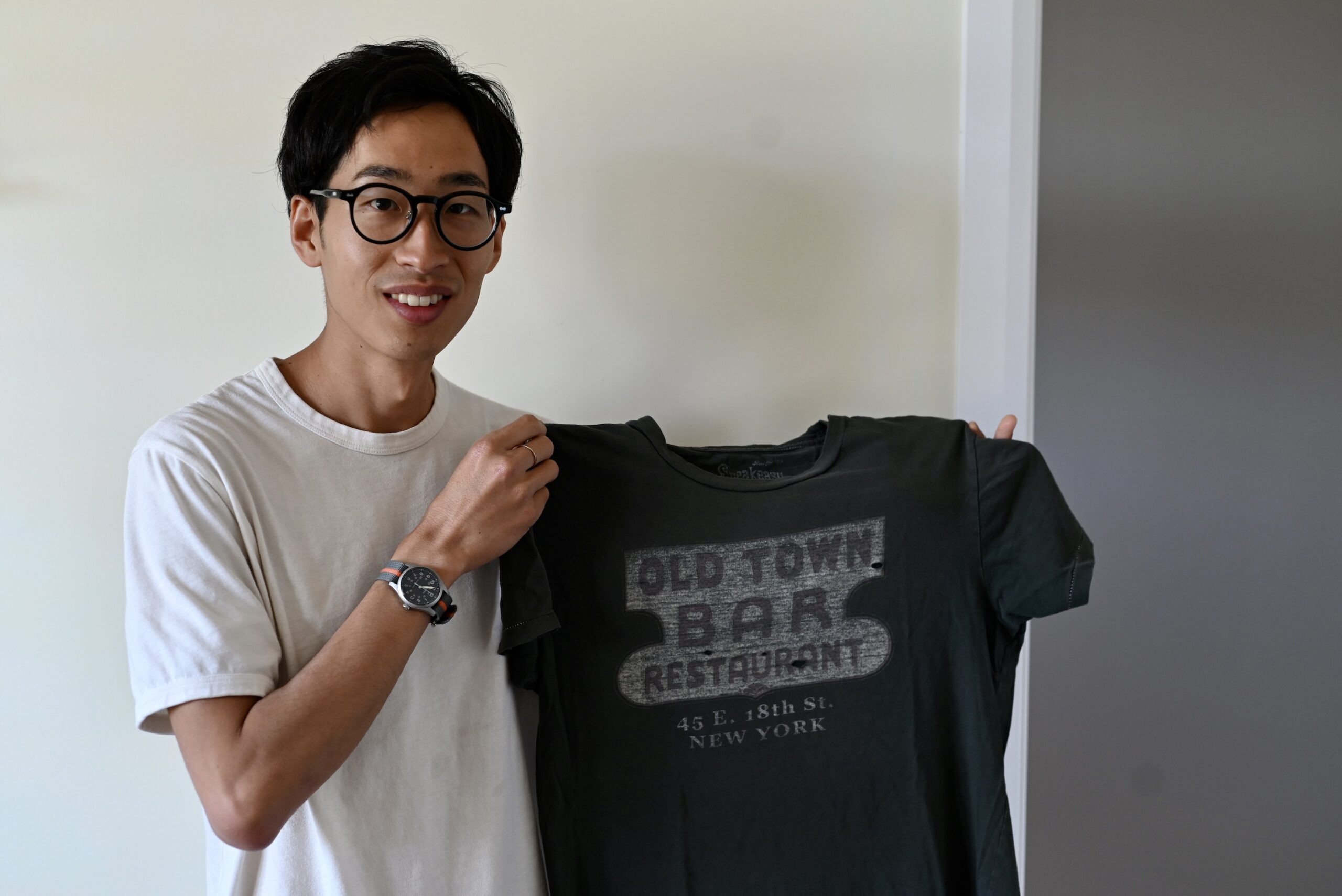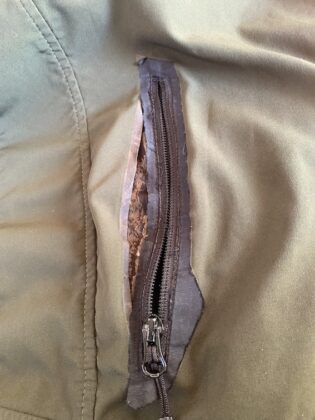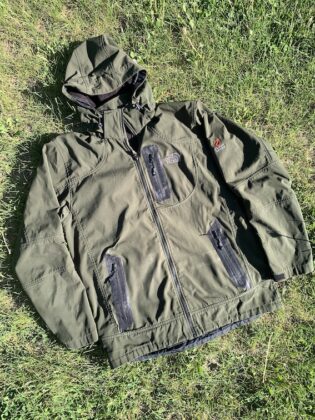The mindset of consumers is changing when faced with broken outdoor gear. Many adventure enthusiasts are choosing to combat throwaway culture and seek repairs to extend the life of their beloved jackets and broken buckles.
Within this outdoor-oriented movement of people advocating for repairs over replacements is Colin Bottomley, a second-year commerce student at Carleton University.
In January, Bottomley launched ReFasten, a company that distributes sustainably sourced materials such as fabric, zippers, seam tape and buckles to help people fix their own gear.
Bottomley said he got the idea to start his business when he began to repair his friends’ outdoor gear during the pandemic.
“We realized there’s a market for it,” he said. “There [were] a lot of seamstresses around, but a lot of them couldn’t do the technical repairs that involved seam tape and heat presses.”
Bottomley first broke into the repair industry in 2021 when he opened his Ottawa-based repair shop, Outdoor Gear Tailor. He recently rebranded his company to ReFasten, switching gears from doing all the repairs himself to supplying repair materials for others. He said the rebrand allowed him to stay involved in the industry while at school.
He is just one of the many outdoor enthusiasts doing their part to promote repair culture, and giving a second life to clothing or outdoor gear that would be otherwise thrown away.
Although Bottomley has transitioned away from repairing gear himself, he continues to support and partner with repair shops across Canada that share a similar passion for repair culture.
“We’ve been expanding our list of companies who will repair your gear,” he said. “That way, we can send [customers] in the direction of someone who’s really competent and able to do what they’re looking for.”
One of ReFasten’s partnerships is with Thread The Needle, a repair shop located in Golden, B.C.
Shop owner Noemie Roy wrote in an email to the Charlatan that she has bought supplies from ReFasten and enjoys partnering with a company that holds similar values.
“We share values of sustainability and a passion for the outdoors, and working together is a great way to see our industry grow,” Roy wrote.
Repair culture in the outdoor gear industry
In the past decade, more than 1,000 repair cafés have been established worldwide to meet the increasing popularity of repair culture. Within these spaces, people can get broken items repaired for free, learn valuable repair skills and network within the community.
While these cafés are open to repair all sorts of different household items and gadgets, Bottomley said this rise in interest to repair and reuse items is particularly relevant to outdoor gear.
“With outdoor gear, I think you have a group of people that specifically care about the environment, so you see [repair culture] more,” he said.
Avid bikepacker Jen Adams said she frequently buys fabric and other materials from ReFasten to repair her gear.
She said repair culture is particularly prominent in the bikepacking community, as gear is highly specialized to fit each person’s individual bike.
“If you have something that you know works, it is really nice to repair it and keep it going,” she said.
ReFasten charges anywhere from $5 to $35 for gear patches and up to $6 for a zipper. With large outdoor gear retailers such as Mountain Equipment Company charging around $200 for a new backpack or jacket, gear repairs also offer a financial incentive to combat throwaway culture.
For people without the technical skills to do their own repairs, bringing the gear to a local repair shop is often still a more cost-efficient alternative to buying new.
“Sometimes you pay $15 [for a repair] and you save a $500 jacket from going to the waste bin,” Isabelle Anka-Thibaudeau, owner of Atelier Hors-piste in Gatineau, Que, said.
Anka-Thibaudeau said she has observed an expansion in the outdoor gear repair market since she started her business.
“In the last 10 years, [I’ve seen] a change in perspective,” she said. “Clients are ready to pay more in repairs to not have to throw out their garments. It’s not just to save money, but to consume less.”
She added cost and personal attachment are also significant factors in the prevalence of repair culture in the outdoor gear industry.
“It’s generally not cheap to buy new outdoor gear, and we get used to using it and people get attached to their stuff,” she said.
Making your gear your own
Shuya Yanagisawa, owner of Yanagi Repair Store in Merrickville Ont., said repair culture is important to him because it allows people to personalize their gear or give a new life to a garment with memories attached to it.
“If I wear T-shirts with stitching [and alterations] on them, that T-shirt makes me more myself,” he said. “It’s like a friend.”
Before Yanagisawa immigrated to Canada, he bought a shirt in Osaka, Japan that has an address from New York City featured in the t-shirt’s design. He said he went to the address and took a photo wearing the t-shirt.
Even though it’s now smattered with small holes, Yanagisawa still holds onto the T-shirt and the personal sentiments attached to it. He said he hopes to preserve his customers’ garments so they can do the same.

Patagonia is a major retailer popularizing the individuality of repair culture. As part of their Worn Wear program, customers can mail their gear back to the company for repair or trade in their gear for credit, which is then sold second-hand on their website.
Since it began operating in 2005, Patagonia’s Worn Wear repair tours and repair centres have repaired more than 400,000 products.
When repairing gear, Patagonia will often use contrasting colours or bold shapes to patch and repair garments. Roy said Patagonia’s initiatives are popularizing the idea of personalizing gear through repair.
“If Patagonia does it, then people want it,” she said.
She said Patagonia spearheading the trend makes it easier for small repair shops such as hers to follow in their footsteps.
“The use of contrast and colorful materials is more realistic for us,” she said, noting that it’s difficult to find matching fabric for every item she repairs. “I even had people telling me they wanted colorful patches on their brand new clothes. This trend gives me hope that repairs will increase in popularity and that repair culture will grow.”
In the name of sustainability
The clothing and textile industry is responsible for an estimated two to eight per cent of the world’s greenhouse gas emissions, according to the United Nations Alliance for Sustainable Fashion. In comparison, this is more emissions than the aviation and rail industries produce when combined.
Roy said these numbers are often difficult for consumers to comprehend.
“It feels like we’re so far gone that nothing could reverse the rhythm in which we produce and consume,” she said in an email.
However, she remains optimistic for a future in which repairing clothing is a common and accessible practice.
“In opposing throwaway culture, repair culture can play a major role in redefining our relationships with the goods we own and ultimately slow down consumerism,” she wrote. “By offering an alternative to buying new, shops like mine are participating in this cultural shift.”
Repair businesses such as ReFasten are also introducing new initiatives with sustainability in mind.
“Right now almost all of our fabrics are recycled,” Bottomley said. “We’re [also] transitioning our plastic hardware so it’ll be made from recycled fishing nets. Sustainability is at the core of it for sure.”
Countries such as Sweden are taking steps to combat throwaway culture on a larger scale by implementing tax breaks on repairs to footwear, clothing, leather goods, household textiles and bicycles.
In 2016, the Swedish government cut the value added tax rate—a goods and services tax—on repairs from 25 to 12 per cent, hoping to give its citizens the financial incentive to consume more sustainably.
“I would like to see more countries following the steps of Sweden,” Roy wrote.
Looking to the future
Bottomley acknowledged that local repair shops can only do so much to increase the popularity of repair culture on a global scale. He’s calling on big corporations to “take the lead” and follow Patagonia’s eco-friendly initiatives to make repairs more accessible to consumers.
Anka-Thibaudeau is looking forward to a future where outdoor gear is made with accessible materials that would simplify repair jobs.
“Modern [gear] … is not made to be repaired,” she said. “[In] the future it would be cool to make stuff to last [and manufacture it] in a way so it can be easily repaired.”
Roy is asking consumers to think about the repairability of equipment before purchasing it.
“I encourage people to observe more when they are shopping for gear,” she wrote. “Is this a common piece of hardware or one that I’ve never seen before? Are the seams glued or stitched? Could I replace this part myself if it broke in the field? Can I source this part myself?”
Yanagisawa stressed the importance of buying products made within Canada to facilitate the accessibility of materials.
“If people buy more and more from their country, it’s going to be [easier] … to get the parts and materials [to repair it],” he said.
Together, this movement of repair shop owners and outdoor enthusiasts are challenging consumers to consider repair culture in everything they buy, not just outdoor gear.
“If it’s outdoor gear or your microwave, at the end of the day, the easiest way to reduce your environmental footprint is [to] keep things in action longer instead of throwing it out,” Bottomley said.
An earlier version of this article misspelled Isabelle Anka-Thibaudeau’s name. The Charlatan regrets the error.
Featured graphic by Angel Xing.









